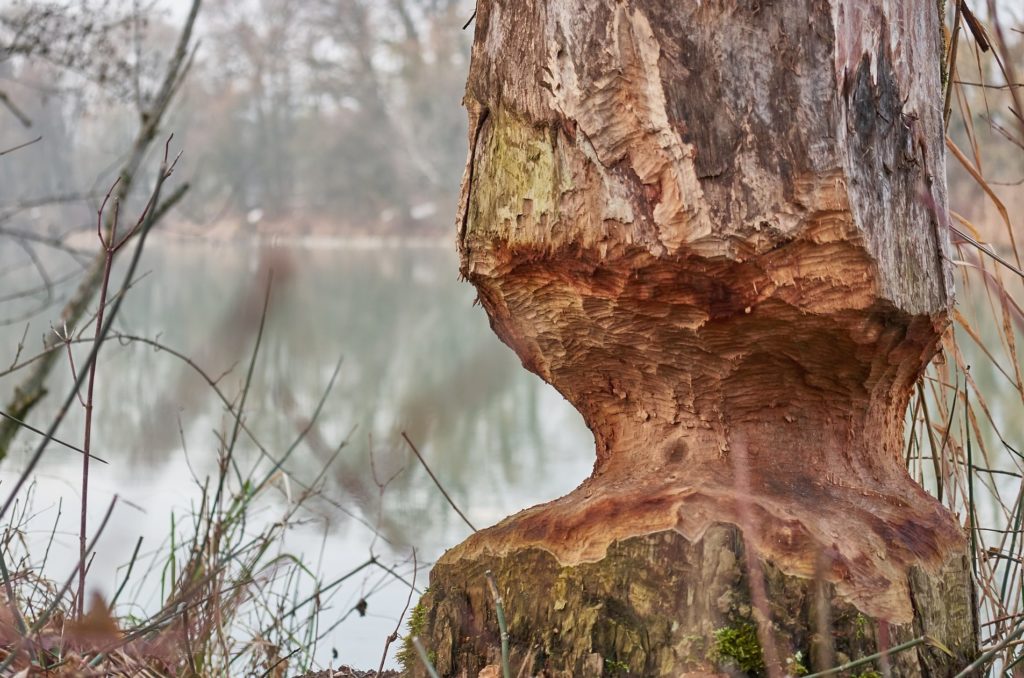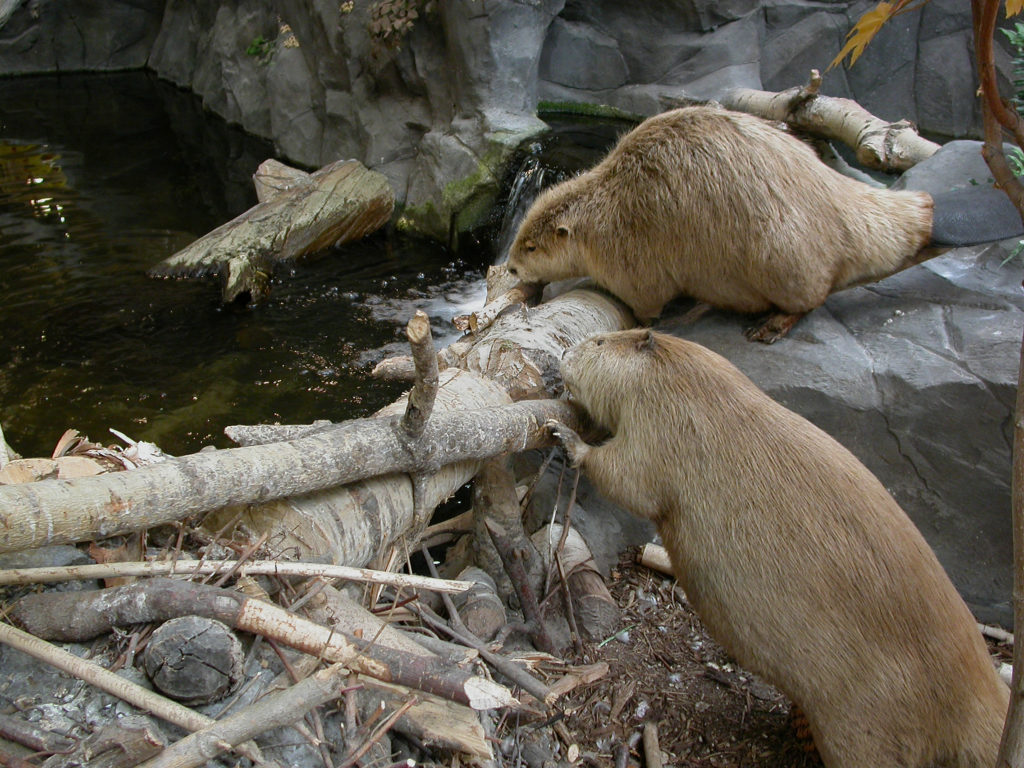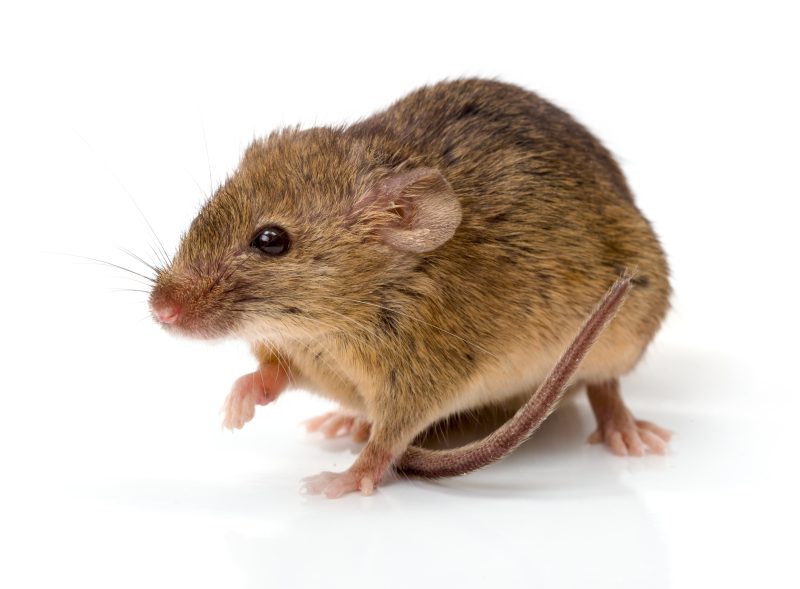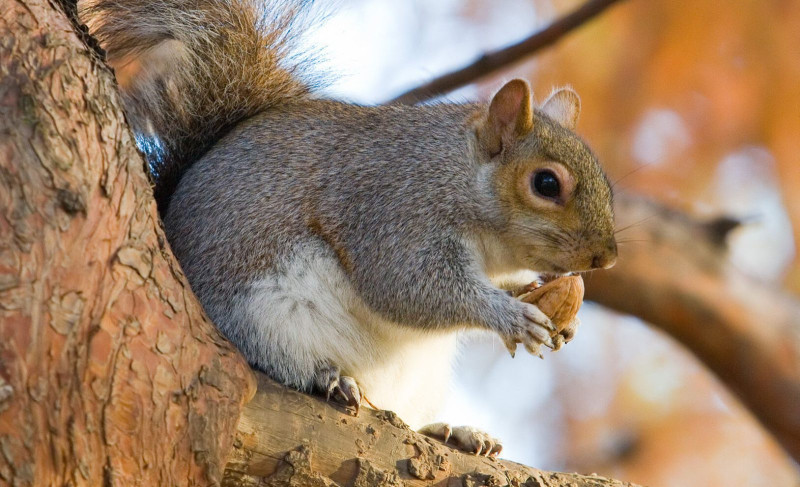There are only two beaver species in the world. We’re fortunate to have one of them right here in North America, the North American Beaver. It’s considered a nuisance by some, but beaver dams are vital to wetlands. Here in North America, we have the North American Beaver, Castor canadensis, often just called “beaver.” It’s native to North America and a few European countries and one of only two beavers in the world. The other is the Eurasian Beaver, Castor fiber, which inhabits Europe and parts of Asia. Another N.A. “beaver,” the Moutain Beaver, Aplodontia rufa, is only distantly related and isn’t actually a beaver.
Master dam builders
Beavers are best known for building dams, and they do it brilliantly. Semi-aquatic and primarily nocturnal, they build them by gnawing trees until they fall over, then moving them into water—a nearby creek, pond, canal, or river. Trees too large to be moved are gnawed into a manageable size. Twigs and mud also go into the construction. The dam is repaired constantly and, over time, can grow very large.
Dam-building comes easily to beavers. First of all, their size—up to 55 pounds—allows them to lift and nudge and drag logs. Also, like all rodents, their teeth grow continuously, and they must gnaw to keep them filed down, so chopping up building materials is like painless dental work for them. They have five dexterous fingers on their front feet for manipulating construction materials. Their hind feet are webbed, making them perfectly designed for propelling through water to construct and maintain their dams. Their tail is scaly and wide and serves as a rudder while swimming. When alarmed, they use it to slap the water as they dive. The sound can be heard at great distances both in and out of the water.
Their dams aren’t built without purpose, just to stay busy. As someone once said, a dam is their fortress wall, and the surrounding water is its moat. Like human forts, the goal is to keep them safe from enemies.
The dam is their home. Well hidden within and heavily fortified with twigs and mud, is their “lodge,” situated above the water line, where a beaver family stays cozy and safe. And dry, too, except when coming and going, as the lodge entrance is always below water—another nifty safety measure. The lodge houses a family group of a monogamous adult pair and their new and yearling offspring.
Beaver dams are beneficial
Beaver dams are essential to their survival, but they’re valuable to humans, too.
- They help create wetlands.
- Eighty-five percent of all N.A. wildlife depend on wetlands.
- Half of the endangered and threatened species in N.A. depend on wetlands to survive.
- Dams help purify water as it slowly trickles through, and aids in control of water silt, too.
- Dams slow flood waters, raise water tables, and slow erosion.
The presence or absence of beavers in nature greatly affects other wildlife, and, for this reason, they’re called a “keystone species.” When keystone species are removed from their natural setting, the quality of the habitat goes down, resulting in fewer wildlife species thereafter.
A beaver’s diet is mostly herbivorous, with water lilies being a favorite food. They also eat twigs, leaves, bark, and berries.








